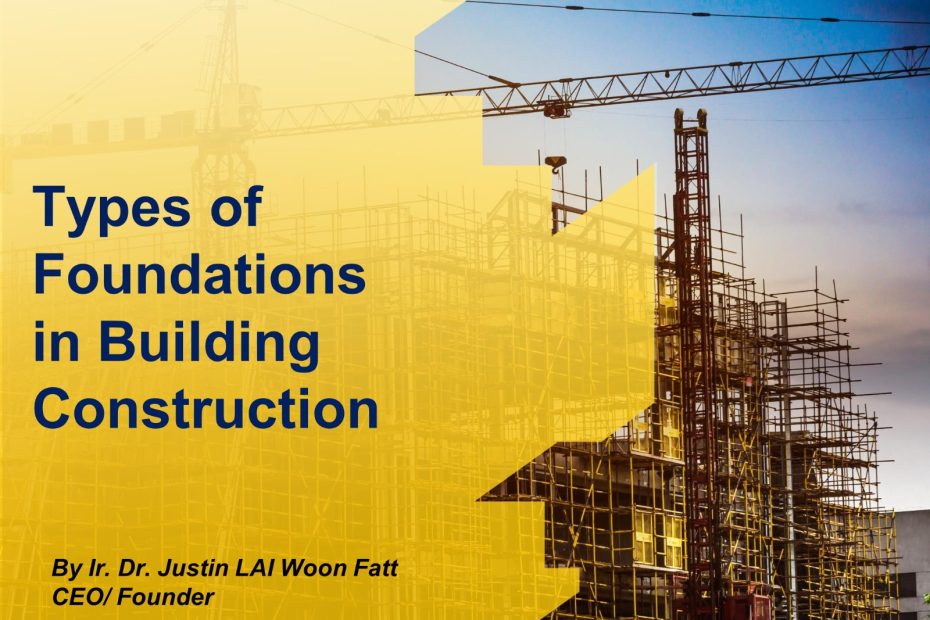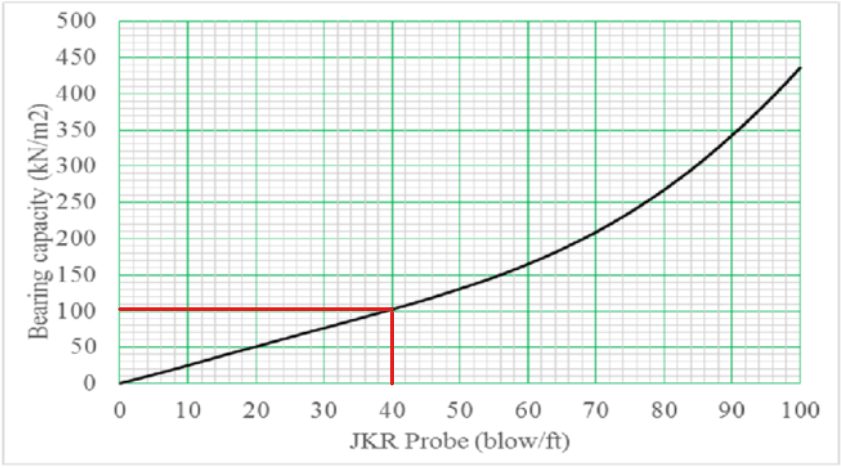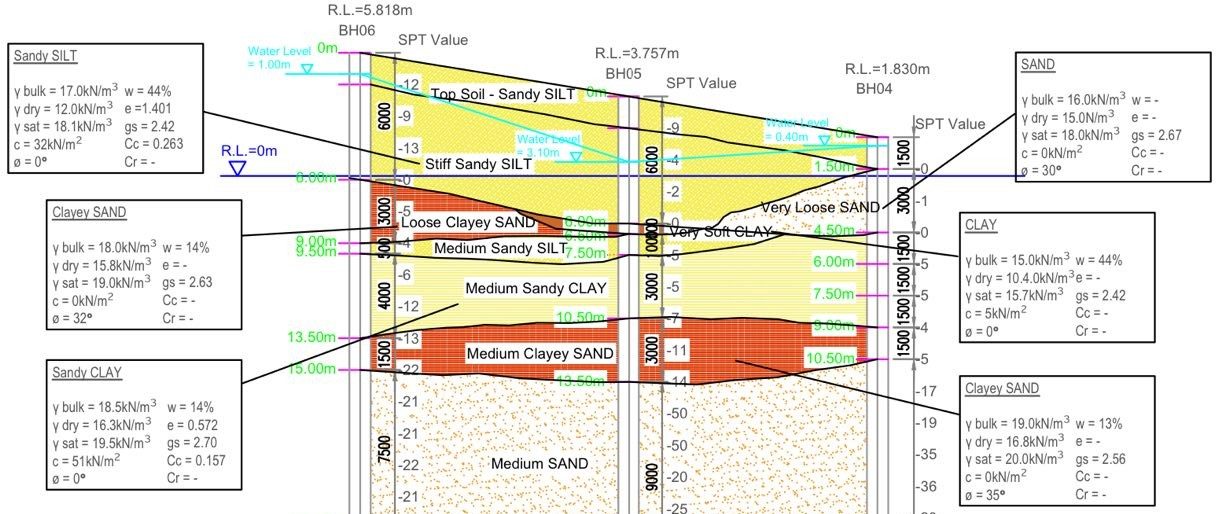Author: Ir. Dr. Justin LAI Woon Fatt | 28 April, 2024
INTRODUCTION
A building usually consists of two main components, superstructure (above ground) and substructure (below ground). The foundation is known as the substructure. They guarantee that structures can resist the test of time and environmental pressures by providing crucial support and stability. Different types of foundations are used in construction to accommodate various factors such as soil properties, the type of structure being built on, and the load-bearing requirements [1]. This article will further discuss the significance of these foundations and clarify their differences.
CATEGORY OF FOUNDATION
Foundations are usually classified into two primary categories:
1. ) Shallow Foundation:
Shallow foundations are constructed near to the surface of the ground and transfer weight to relatively shallow ground (often 1 to 3 metres). This kind of foundation is often used for lightweight structures such as houses, stores, guard house, small factory, etc. with a maximum load per column of not more than 50 tonnes. A medium (firm) upper stratum of soil is the minimum requirement of shallow foundations which is ideal for light structures like low-rise buildings (< 5 stories). JKR/ Mackintosh Probe test is conducted to determine soil bearing capacity [2].


- The graph below illustrates the relationship between the no. of blows/ft of probe test and soil bearing capacity.
The size of the pad footing is designed to carry the structure load knowing the in-situ soil bearing capacity. Based on the in-situ soil bearing capacity, the larger the structure load exerted to the ground, the larger the size of pad footing is required, and vice versa.

Shallow foundations are subdivided into various types based on their shape, size, and overall design as follows [3]:
2.) Deep Foundation:
A deep foundation is constructed deep down and disperses weight at a depth of at least three meters. The load-carrying stratum (end bearing) and frictional resistance are essential for pile stability [4].
The number of blows (N) is measured using the Standard Penetration Test (SPT). As a result, the N-value is used to determine stratigraphy, the relative density and angle of shearing resistance of cohesionless soils, and the cohesion of cohesive soils. This is done utilising geotechnical engineering ideas. The test is usually terminated at N-value of 50 unless other specific criteria is given by the engineer [5]
Figure 2: Example of Soil Stratigraphy
It is an ideal foundation for low-rise buildings with soft/loose upper soil stratum and heavy structures including high-rise buildings, and infrastructure (metro stations, bridges, fly-overs, etc.). Deep foundations are subdivided into various types as follows:
CONCLUSION
In conclusion, various site-specific factors, including conditions and circumstances, determine whether shallow or deep foundation techniques should be used. While deep foundations perform well in soft/loose soils and while supporting heavy constructions, shallow foundations are favoured for stiff soils and lighter loads. A thorough soil research and careful design are needed to guarantee the foundation’s overall safety and stability.
Ir. Dr. Justin LAI Woon Fatt
CEO/ Founder
IPM Group
References:
[1] Madeh Izat Hamakareem (n.d.). Foundation Selection Criteria for Buildings. The Constructor. Retrieved on 28th April 2024 from https://theconstructor.org/geotechnical/foundation-selection-criteria/6971/
[2] Mohd Fairus Yusof (2017) Correlation of JKR Probe with Undrained Shear Strength. MATEC. Retrieved on 28th April 2024 from https://www.matec-conferences.org/articles/matecconf/pdf/2017/17/matecconf_iscee2017_07009.pdf
[3] Indeed Editorial Team (2022, June 25). Foundation Types in Construction: Definition and 5 Primary Types. Indeed. Retrieved on 28th April 2024 from https://www.indeed.com/career-advice/career-development/foundations-types
[4] Hamzah M. Beakawi Al-Hashemi (2016, Jan). End Bearing Capacity of Pile Foundation. University of Bahrain. Retrieved on 28th April 2024 from https://www.researchgate.net/publication/309533940_End_Bearing_Capacity_of_Pile_Foundations
[5] PRD RIGS (2023, June 15). Standard Penetration Test (SPT) for soils – All You Need to Know. Retrieved on 28th April 2024 from https://www.linkedin.com/pulse/standard-penetration-test-spt-soils-all-you-need/
[6] John Lawrie (n.d.). Threading For Micropile. Retrieved on 28th April 2024 from https://www.johnlawriemetals.com/old/tubulars-2/micropile
[7] DUASIA PADUSEJATI (n.d.). Pile Production. Retrieved on 28th April 2024 from https://duasia.co.id/index.php/pile-production
[8] Top-Base Method (M) Sdn. Bhd. (n.d.). Pile Foundations. Retrieved on 28th April 2024 from https://topbasemethod.com/spun-piles-malaysia/
[9] Henry Drilling (n.d.). Bored Piles. Retrieved on 28th April 2024 from https://www.henrydrilling.com/bored-piles/





